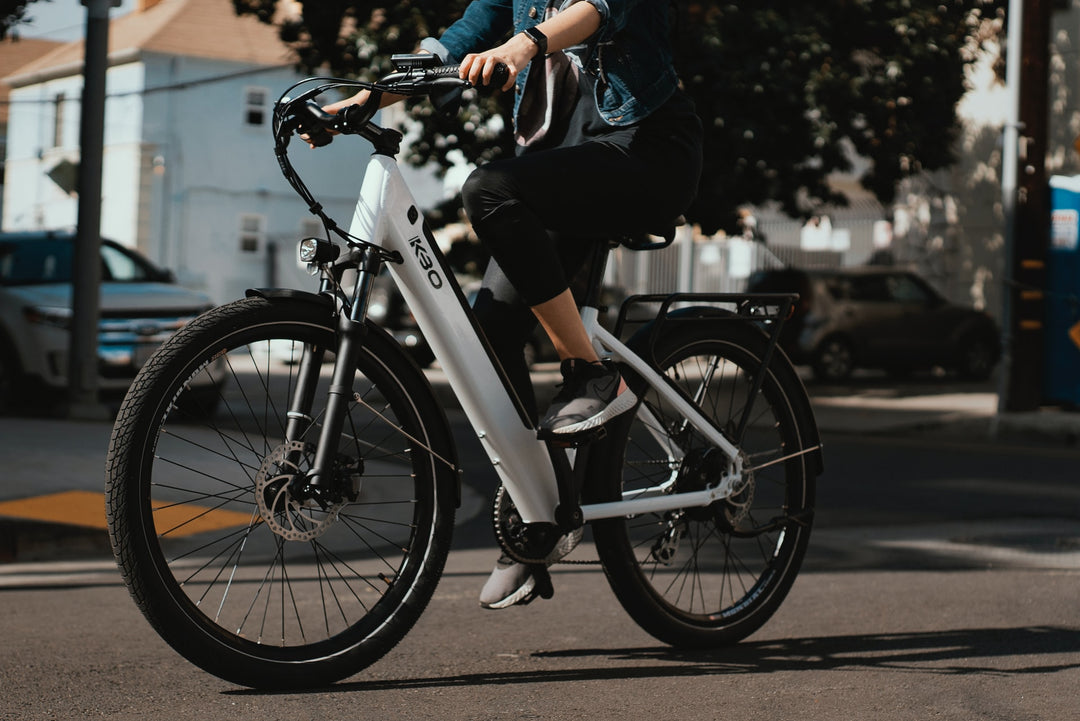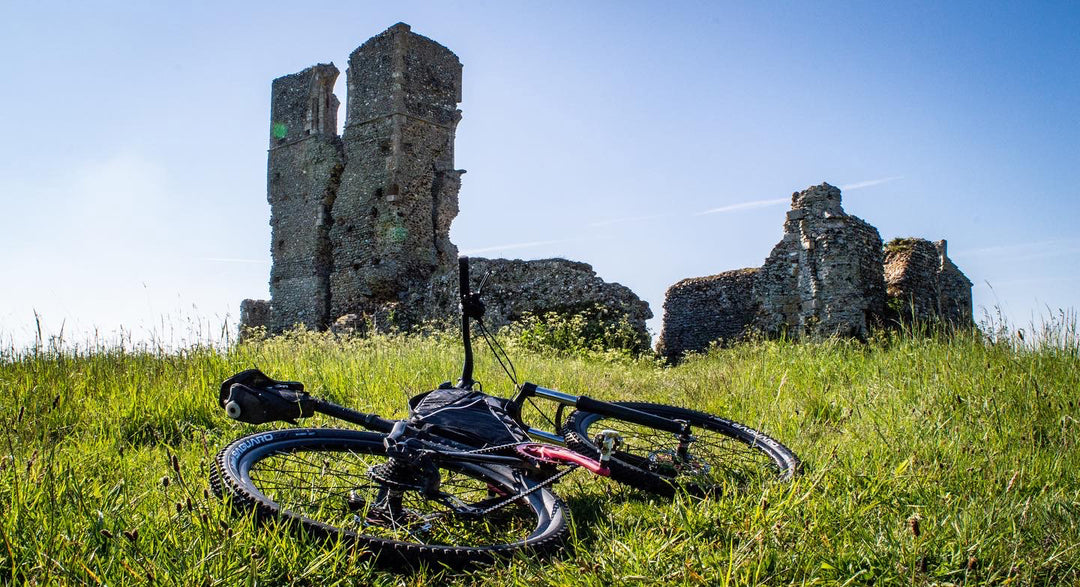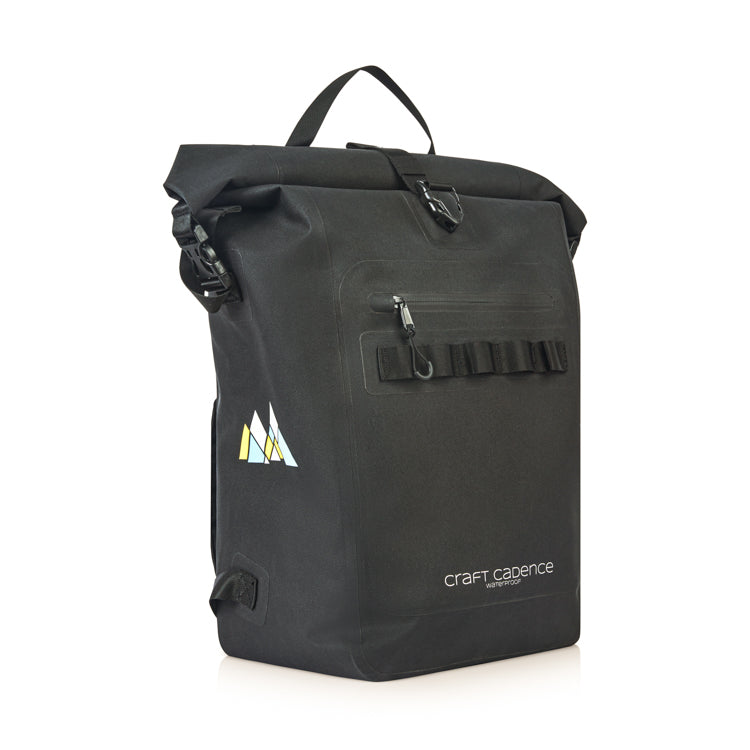Waterproof roll top backpacks for cycling - how important are IPX ratings?
Spending numerous years commuting to work in all weather conditions, you are at some point most likely to get wet.
A typical search of waterproof cycling backpacks or panniers will show all sorts of manufacturers claiming the term "waterproof", even when they are clearly not - leading to less than happy consumers.

To counteract fake claims on waterproofing, the use of IPX ratings have increased in popularity. We even see it now in smartphones with Samsung's IP68 rating, or Apple's IP67 rating.
But how do these rating apply to cycling backpacks, and should you care?
How IPX waterproof certifications work, and how it applies on cycling backpacks and bags
The name IPX stands for International Protection Marking or Ingress Protection Marking. The actual rating of a product is explained by "IP" followed by two numbers.
The first number shown is the level of dust exclusion, but most backpacks and bags aren't tested for this, so it is usually replaced by X instead. So an IPX3 rating means that it is not rated for dust, but is rated 3 for water resistance.
Here is a table laying out the criteria at each IPX rating, and what the actual experience will likely be for the cyclist.
| IPX Rating | Technical Criteria | What this means for the cyclist |
| IPX1 | Dripping water - no harmful effect for up to one minute | Little or no protection from even light rain - not waterproof. |
| IPX2 | Dripping water at angle - no harmful effect for up to one minute fro dripping water up to 15 degree angle | Little or no protection from even light rain - not waterproof. |
| IPX3 | Spraying water - falling water from up to 60 degrees angle | Water resistance from light showers. Not suitable for heavy rain or carrying electronics. Not waterproof. |
| IPX4 | Splashing water - splashing water from any angle at low pressure (10 litres per minute) | Water resistance from light showers. Not waterproof. |
| IPX5 | Water jets - water projected from any angle at medium pressure (12.5 litres per minute) | Waterproof against showers for prolonged periods. Cyclists carrying electronics should aim for this rating to guarantee waterproof in any condition. Waterproof. |
| IPX6 | Powerful water jets - water projected at any angle at high pressure (100 litres per minute) | Extra level of waterproofing from IPX5. Bag can now withstand all types of elements including storms. Should survive small submersions for a few minutes. Waterproof and small submersions. |
| IPX7 | Immersion - immersion in water of up to one metre for 30 minutes | Perfect for cyclists who wants to use the bag for weekend water sports such as kayaking and canoeing. Bag can be submerged in water for up to one metre for 30 minutes. Waterproof and submersion. |
| IPX8 | Deeper immersion - immersion in water of more than one metre for specified time period | Overkill for cycling requirements. This is more suitable for divers and other water activities. |
| IPX9 | High temperature water jets - high pressure, high temperature water projected from any angle | Overkill for cycling requirements. This is more suitable for product that come in contact with hot water |
Based on our experience of years of commuting, we believe that IPX5 is the minimum rating for a manufacturer to begin labelling their bags as "waterproof". Even then, it should be made clear that total submersion of the bag in water is not possible. However, the gold standard for the cycling commuter is a bag with IPX6 rating, as it protects valuable from the most severe downpours from any angle and pressure.
For those looking for a combination of a cycling commuter bag and an outdoor bag the IPX7 is most suitable, as it is able to handle total immersion up to 1m of water. Which means this type of bag is ideal for sports such as kayaking etc. But this will come at a premium price.
How effective are zipper designed bags at waterproofing?
A typical commuter doing light commuting is likely to purchase a backpack with zipper design with 2-3 compartments.
The thing to note is that even if manufacturers of these bags state that it is waterproof – it is not. The bag can only handle very light rain from a vertical point. Anything from the side or heavier rain will soak through both the material and zipper in a matter of minutes. This is true even if a backpack cover is used.
Zipper bags can generally reach up to IPX4 rating, which can handle light rain and splashes of water but not downpours. Heavier rain will mean that water will seep through the zipper holes and fabric up to 10-15 minutes. This means that belongings will get damp if it rains, or even soaked in water after longer periods of time. Generally, zipper bags are suited more towards the weather friendly cyclist who needs light protection in case of an unexpected rain.
How effective are seam welded bags at waterproofing?
Seam welded roll top backpacks can provide waterproofing all the way up to IPX7 standards. Roll top bags with IPX5 rating onwards will protect against downpours and splashes of rain at all angles. The bag should be made from a completely water repellent material such as the use the PVC or Nylon/Polyester coated with a layer of TPU.
If waterproofing is a priority, definitely go for a seam welded roll top bag compared to a zipper designed bag.
Summary
Our analysis shows that generally, manufacturers abuse the words "waterproofing". Therefore IPX ratings do play a valuable role to give consumers comfort that the product will actually repel water from light showers to full submersions.
When you are purchasing a "waterproof" bag always be careful of manufacturer claims. Look for certified IPX ratings to be sure, In our years of commuting we recommend at least a IPX5 rated bag, with IPX6 as the gold standard for a cycling backpack that is actually waterproof and lives up to expectations. Anything above IPX6 we recommend if you are looking for an all round Backpack for both cycling and outdoor sports.
Cover Photo by Pietro Zuco / CC BY



